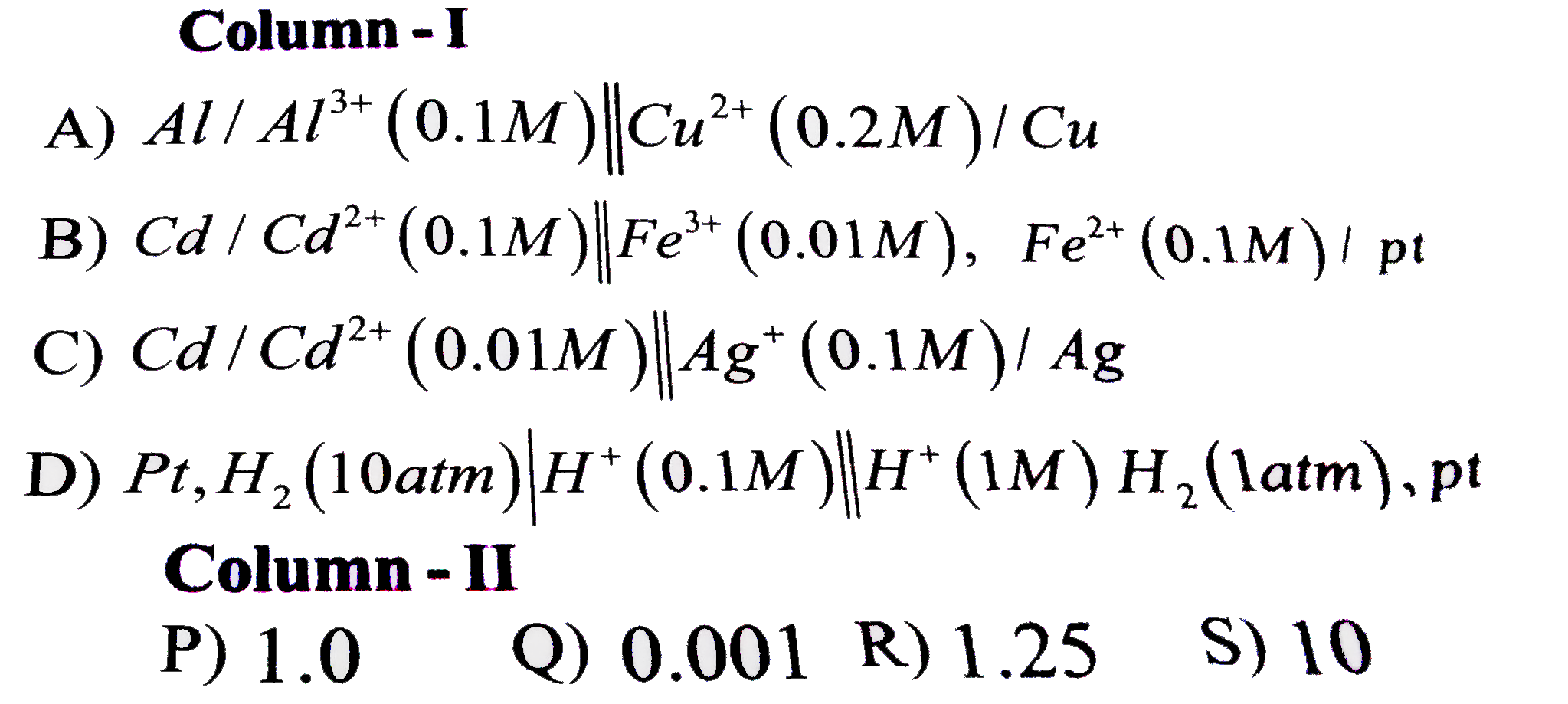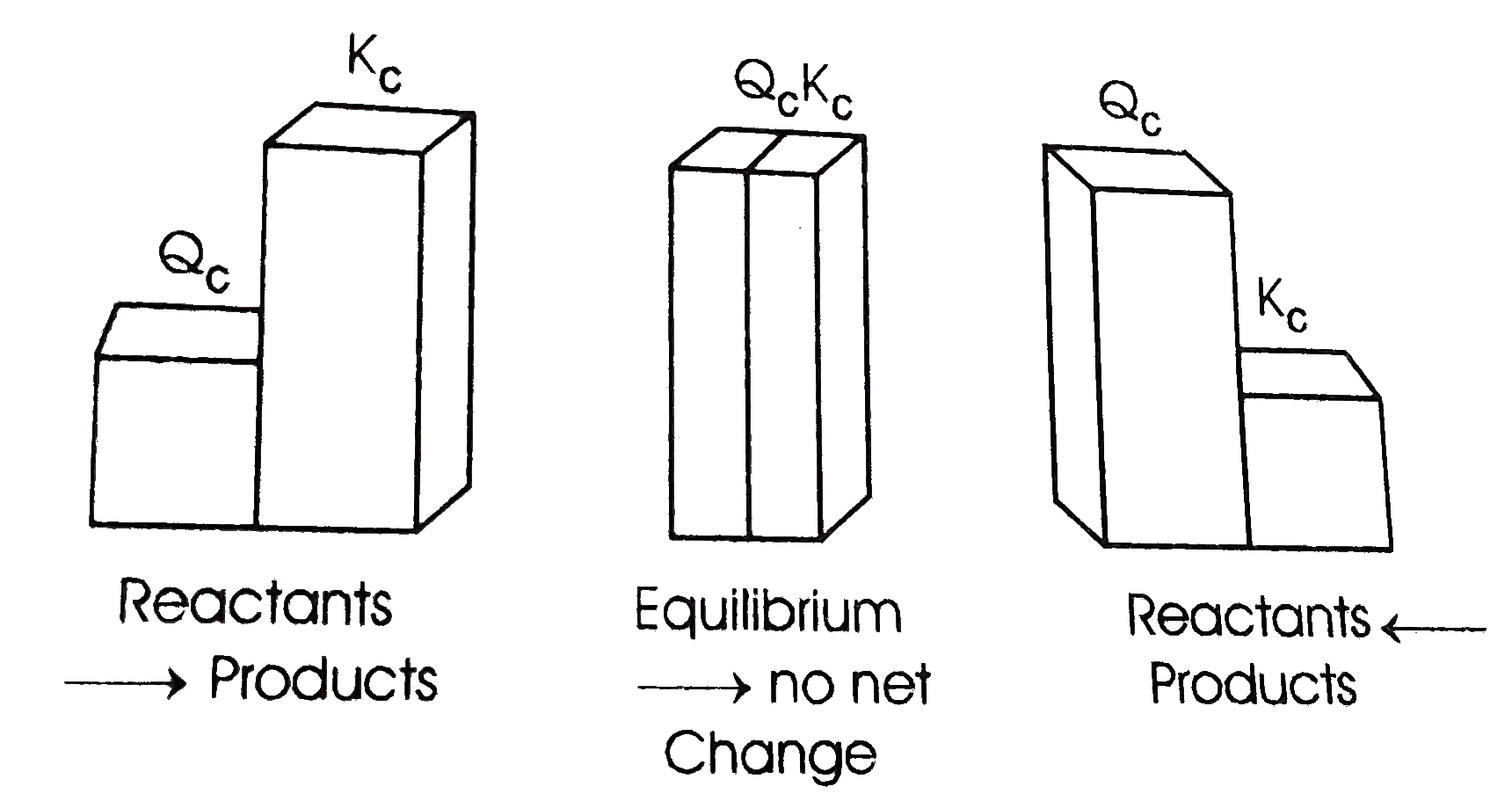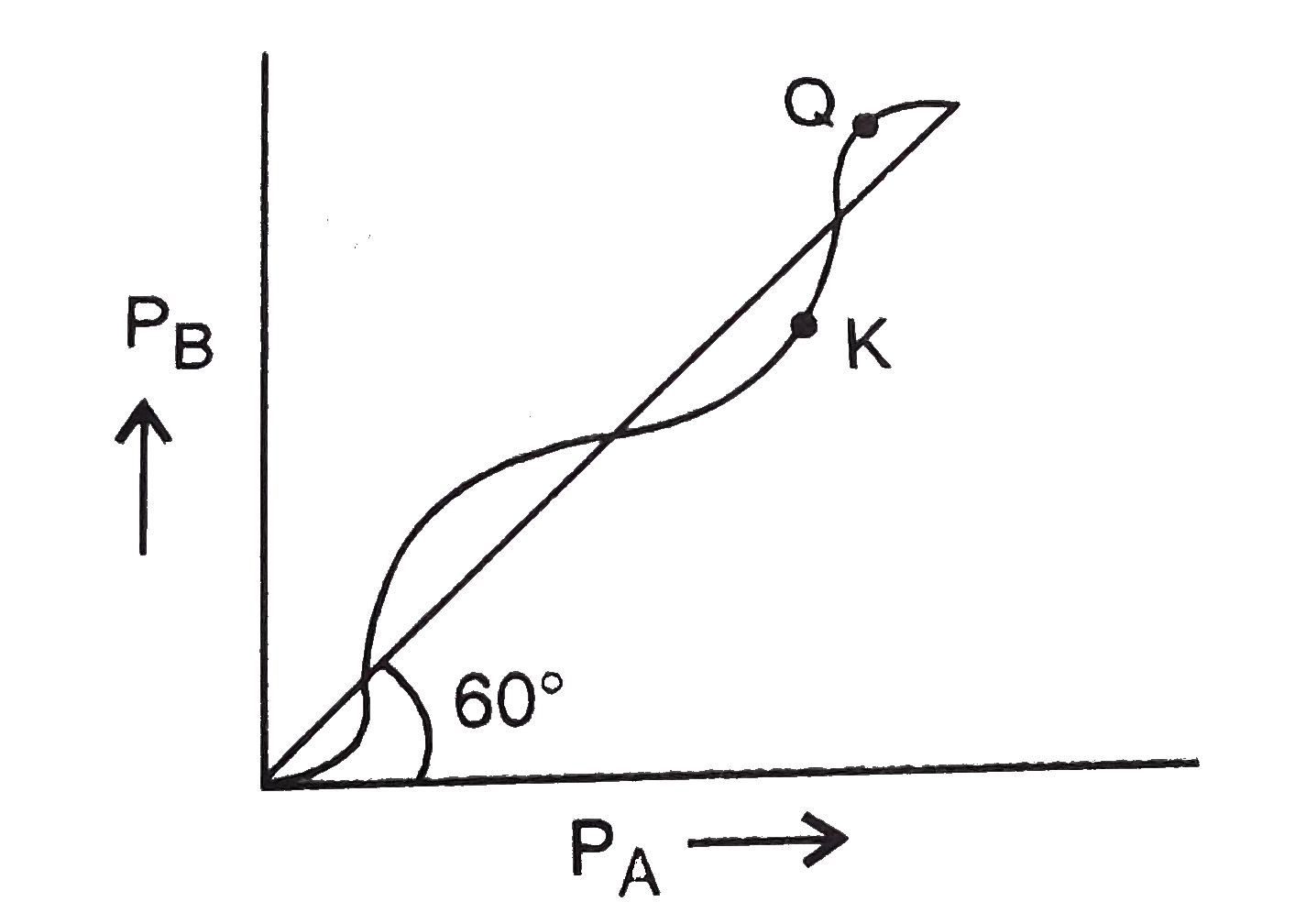The reaction quotient (Q) predicts:
the direction of equilibrium to be attained
the ratio of activities at equilibrium i.e., Kc
the ratio of activities at any-time
all of these
The correct Answer is:D
These are facts.
Topper's Solved these Questions
- BOOK - P BAHADURCHAPTER - CHEMICAL EQUILIBRIUMEXERCISE - Integer12videos
CHEMICAL EQUILIBRIUM
- BOOK - P BAHADURCHAPTER - CHEMICAL EQUILIBRIUMEXERCISE - Comprehension22videos
CHEMICAL EQUILIBRIUM
- BOOK - P BAHADURCHAPTER - CHEMICAL BONDINGEXERCISE - Exercise 711videos
CHEMICAL BONDING
- BOOK - P BAHADURCHAPTER - GASEOUS STATEEXERCISE - Exercise -91videos
GASEOUS STATE
Similar Questions
Match the reaction quotients (Q) listed in coloumn II with the cell reaction listed in column I:
 View Solution
View SolutionThe reaction which is in dynamic equilibrium, ensured us, that the reaction is reversible . But if that the reaction is in equilibrium. The reaction quotient predict either the reversible reaction is in equilibrium or tries to achieve equilibrium. In those reactions which have not achieved equilibrium, we obtain reaction quotient Qc in place of equilibrium constant (Kc) by substituting the concentration of reactant and product at the time, at whih we have to calculate the value of Qc . To determine the direction at which the net reaction will proceed to achieve equilibrium, we compare values of Qc and Kc. The three possible cases are shown as comparison of Kc and Qc in the following figures.

Change in Gibbs free energy, i.e., ΔG is the driving force of any reaction.
For spontaneous reaction , ΔG=−ve
For non-spontaneous reaction , ΔG=+ve
For reaction at equilibrium , ΔG=0
Thermodynamically, we know that
ΔG=ΔG∘+RTlnQ, where Q is reaction quotient and ΔG∘= change in Gibbs energy at standard condition.
For equilibrium A(g)⇔B(g)(Keq=1.732) If the pressure of the system [varied by introducing a stream of A(g) and B (g) is represented by the curve at constant temperature T.

What will be the value of difference of standard Gibbs free energy to Gibbs free energy change at point Q in the figure above ?View Solution
Knowledge Check
- Question 1 - Select One
The reaction quotient (Q) at equilibrium is
A=1B=KC>KD<K - Question 2 - Select One
When two reactants A and B are mixed to give products, C and D, the reaction quotient (Q) at the initial stages of the reaction
Ais zeroBdecreases with timeCis independent of timeDincreases with time - Question 3 - Select One
When two reactants A and B are mixed to give producys C and D, the reaction quotient (Q) at the initial stages of the reaction
AIs zeroBDecreases with timeCIs independent of timeDIncreases with time
When two reactants A and B are mixed to give products, C and D, the reaction quotient (Q) at the initial stages of the reaction
View SolutionIn Q.No .5, if the mixture of gases was allowed to come to quilibrium .The volume of the reaction vessel was then rapidly increased by a factor of two .As a result of the change the reaction quotient (Qc) would:
View SolutionThe reaction quotient, 'Qc' in useful in predicting the direction of the reaction. Which of the following is incorrect?
View SolutionThe reaction quotient, Qc is useful in predicting the direction of the reaction. Which of the following is incorrect?
View SolutionWhich of the following is correct if reaction quotient (Q)=1?
View Solution

